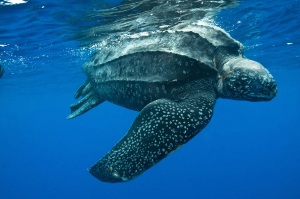This article is the first in a series which will follow the work of the New York Natural Heritage Program, and a team of scientists as they complete a year-long comprehensive field study of the fauna and flora of Plum Island, NY.
Plum Island sits in eastern Long Island Sound, just 7 miles from the Connecticut shoreline and 1.5 miles off of the tip of the north fork of Long Island. Today, it is home to the nation’s foreign animal disease center, where 400 employees from Connecticut and New York travel by ferry to and from each day. Steeped in history, buildings from Fort Terry, which was closed after World War II, slowly deteriorate on the island. For the past seventy years, eighty percent of the island’s 840 acres has been allowed to return to a natural state and become a de-facto wildlife refuge. Endangered and threatened bird and plant species thrive on Plum Island, and abundant fish and marine life, including sea turtles and the North Atlantic right whale, ply the waters around the island.
But do we really have the full picture of the flora and fauna that exist on Plum Island and in its waters? It turns out that we only know a small portion, because access to the island has been limited—up until now.
![Roseate terns are endangered and use Plum Island for shelter, foraging, and raising their fledglings. [A.J. Hand]](https://greencitiesbluewaters.files.wordpress.com/2015/04/roseate-tern-on-log-wingsup.jpg)
Beginning this March, Matt Schlesinger and a team of seven biologists, along with other experts and groups of trained volunteers, will embark on a year-long, comprehensive field survey of Plum Island. “The Department of Homeland Security has been a very gracious host to allow us such access,” remarked Schlesinger. “I am really excited, because it is not often that you get to explore a place that has not been thoroughly studied before, and where there is so much potential to find undiscovered rare species.”
![The Spring Ladies Tresses is in the orchid family, is endangered, and is found on Plum Island.[Spiranthes vernalis. By John Lynch. Copyright © 2015 New England Wild Flower Society.]](https://greencitiesbluewaters.files.wordpress.com/2015/04/spiranthes-vernalis-fl-jlynch.jpg?w=197)
In early spring, the team of scientists will be looking for bats that may be roosting in the underground ammunition bunkers remaining from Fort Terry. “It is possible that the white-nose syndrome which is killing bats in the Northeast may be absent from these bunkers,” explained Schlesinger. “We’ll be looking for barn owls that may be using the bunkers too. If snow is still around, we’ll be doing snow tracking for mammals. Also, we’ll be setting up moth traps for the detection of early-spring moth species.”
A previous study of the freshwater vernal pools within the forests on the island concluded they were unused by frogs or salamanders. “We’ll be surveying the pools this spring to determine if there are any amphibians present”, said Schlesinger, “and we’re hopeful to use acoustic recording devices that can capture the calls of any frog species.”
According to Schlesinger, a study of the rocky intertidal zone around the island will be undertaken this summer for the first time, and he said, “We know of one significant eelgrass bed lying just offshore from the Plum Island lighthouse, and we’ll determine if there are additional sea grass locations. We also hope to see if any sea turtles are foraging around the island.”

Currently, there is no information on what fish species might be living in the 96 acres of freshwater wetlands on the island, including a large deep-water marsh. This summer, fisheries biologists from New York’s Department of Environmental Conservation will be using a variety of techniques, possibly including seining, gill netting, and electro-shocking, to determine the fish populations.
Stay tuned to learn out about the discoveries on Plum Island that will unfold over the course of the next year. The core team of scientists includes:
Matt Schlesinger, Erin White, Kelly Perkins, New York Natural Heritage Program (rare animals)
Steve Young, NYNHP, and Eric Lamont, LI Botanical Society (rare plants)
Greg Edinger, NYNHP (natural communities)
Neil Schoppmann, Dylan Parry, SUNY ESF (moths)
Rob Marsh and staff, NYS DEC (freshwater fish, other taxa)
Posted by Chris Cryder, Special Projects Coordinator for CFE/Save the Sound
